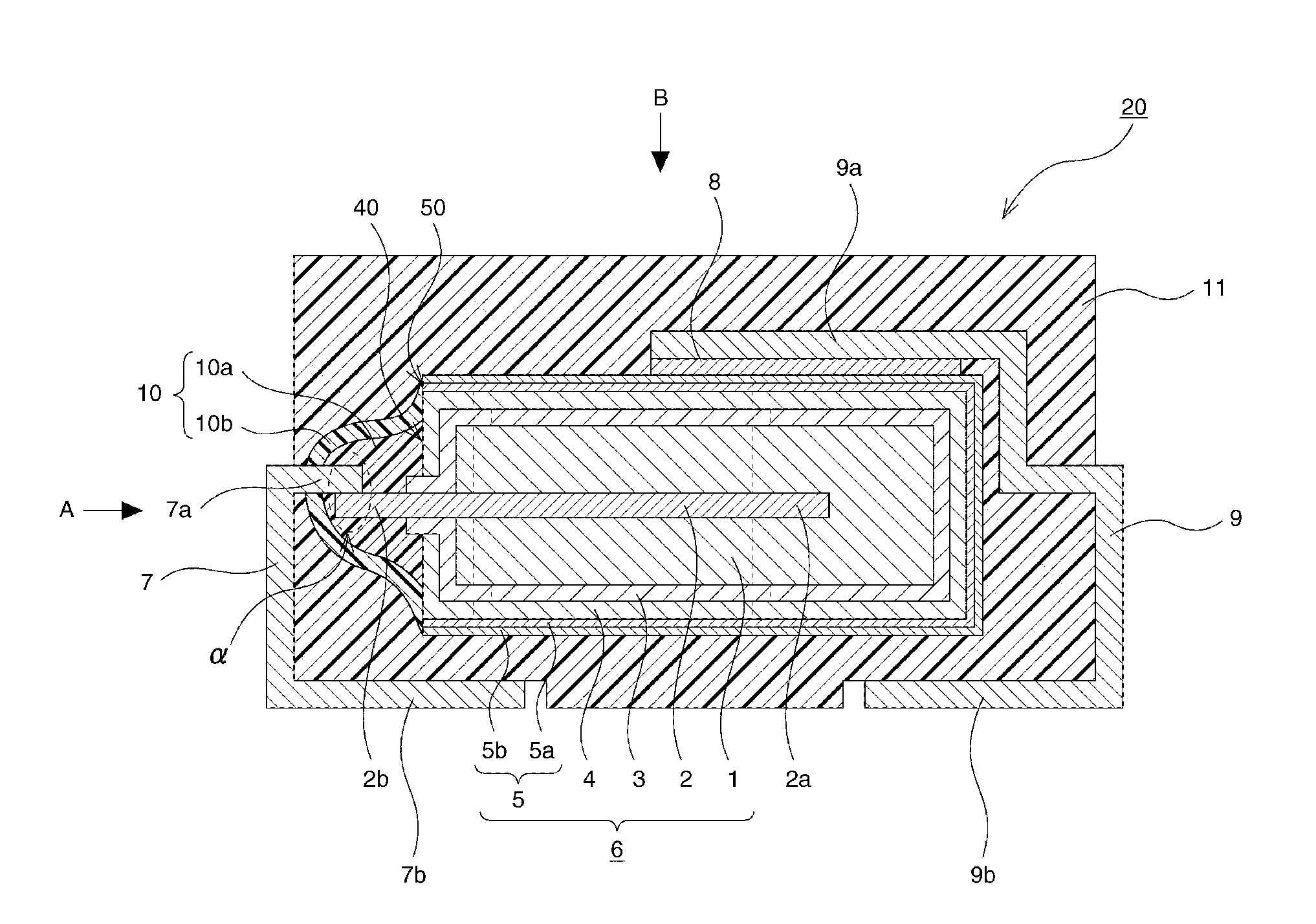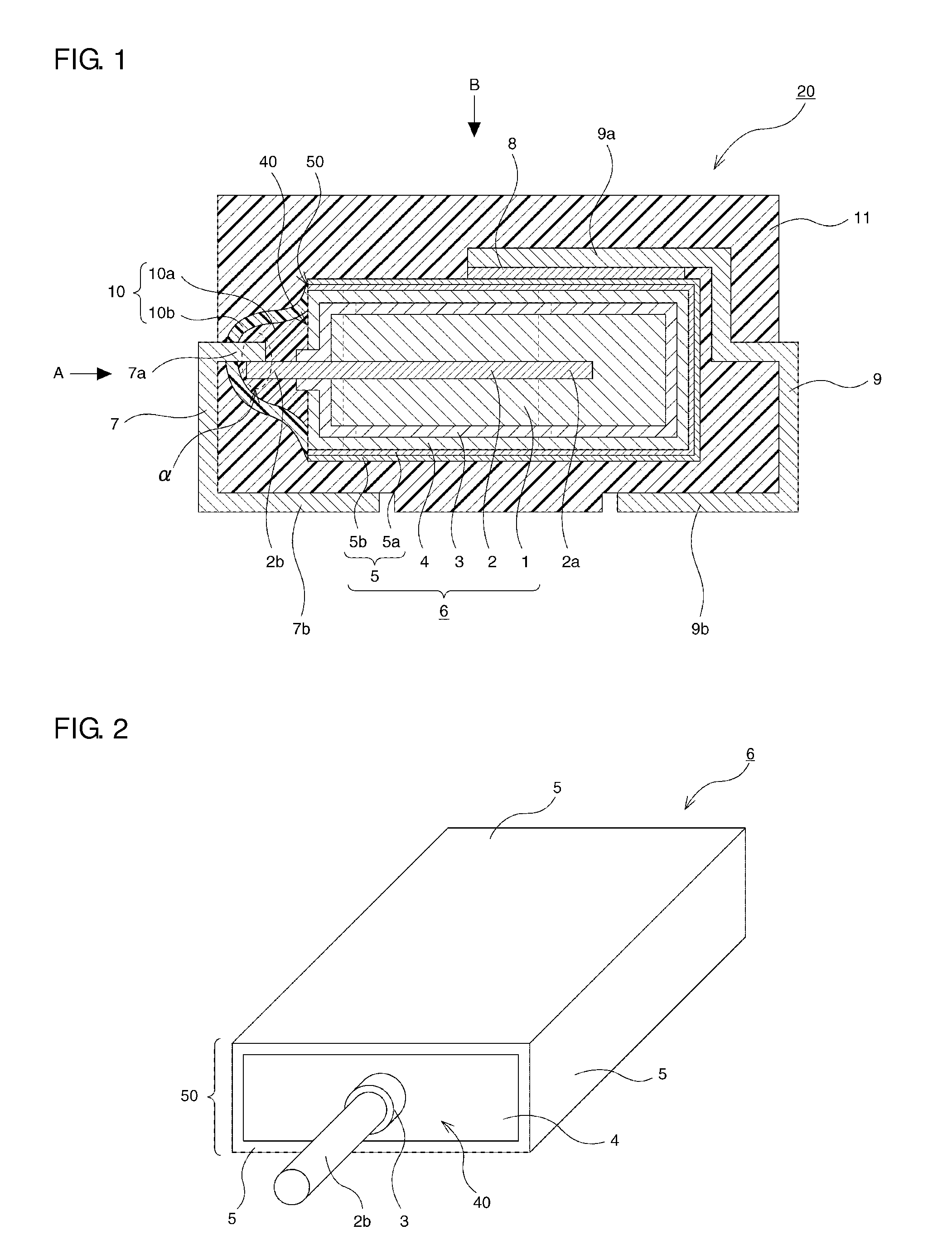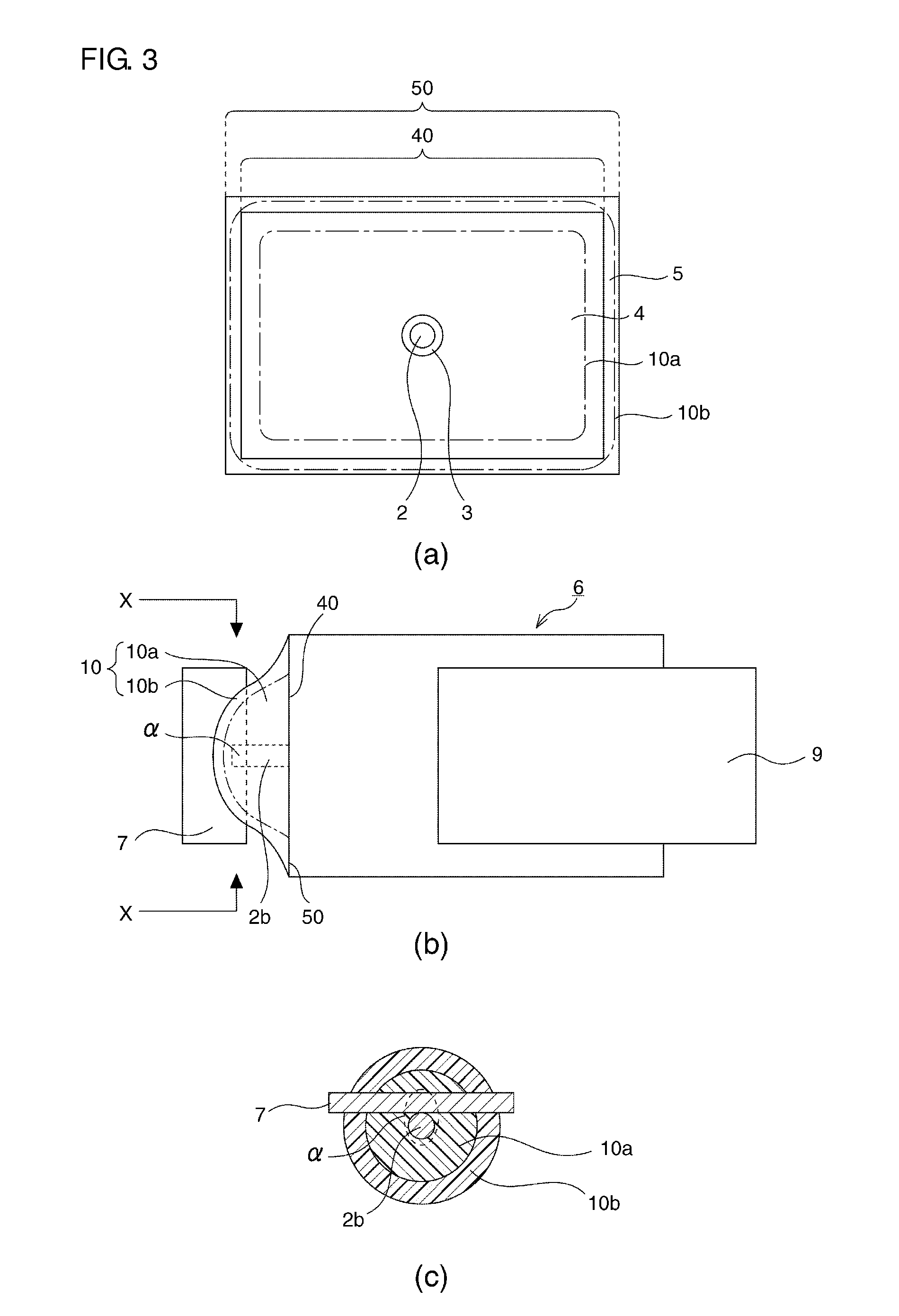Solid electrolytic capacitor
a solid electrolytic capacitor and capacitor technology, applied in the direction of electrolytic capacitors, capacitor electrodes, liquid electrolytic capacitors, etc., can solve the problems of insufficient reduction of stress transmitted from the ano insufficient reduction of stress applied from the anode terminal and insufficient reduction of stress applied through the anode lead to the dielectric layer. , to achieve the effect of suppressing transmission, suppressing transmission
- Summary
- Abstract
- Description
- Claims
- Application Information
AI Technical Summary
Benefits of technology
Problems solved by technology
Method used
Image
Examples
first embodiment
[0037]FIG. 1 is a schematic cross-sectional view for illustrating the interior of a solid electrolytic capacitor according to this embodiment.
[0038]A solid electrolytic capacitor 20 according to this embodiment has the outer shape of a rectangular box. The solid electrolytic capacitor 20, as shown in FIG. 1, basically includes a capacitor element 6, an anode terminal 7, a cathode terminal 9, a resin outer package 11, and a resin layer 10 composed of a first resin layer 10a and a second resin layer 10b. These elements will be described below in an orderly sequence.
[0039]The capacitor element 6 includes an anode 1 made of a valve metal, an anode lead 2 provided so that its one end 2a is joined to the anode 1 and the other end 2b extends from the anode 1, a dielectric layer 3 formed by anodizing the anode 1, an electrolyte layer 4 covering the dielectric layer 3, and a cathode layer 5 covering the electrolyte layer 4.
[0040]The anode 1 is formed of a porous body made by pressing a large...
second embodiment
[0070]Next will be described below a solid electrolytic capacitor 21 according to a second embodiment. Note that the following description is made mainly of the formation of a resin layer 10, which is a difference from the above described first embodiment.
[0071]FIG. 6 is a cross-sectional view for schematically illustrating the interior of the solid electrolytic capacitor 21 according to this embodiment. Also in this embodiment, the exposed portion 40, the other end 2b of the anode lead 2 and the connecting part α are covered with a resin layer 10.
[0072]As shown in the figure, a first resin layer 10a is formed to cover the connecting part α, then extend around the anode lead 2 and then cover the entire surface of the exposed portion 40. A second resin layer 10b is formed to cover the first resin layer 10a, fully cover the surface 50 of the capacitor element and lie partly on other surfaces of the capacitor element beyond the surface 50.
[0073]This structure also performs the same eff...
third embodiment
[0075]Next will be described below a solid electrolytic capacitor 22 according to a third embodiment. Note that the following description is made mainly of the formation of a resin layer 10, which is a difference from the previously described first embodiment.
[0076]FIG. 7 is a cross-sectional view for schematically illustrating the interior of the solid electrolytic capacitor 22 according to this embodiment.
[0077]As shown in the figure, a first resin layer 10a is formed on part of the exposed portion 40 and around part of the other end 2b of the anode lead 2, but does not exist around the connecting part α. Instead of this, a second resin layer 10b is formed to cover the connecting part α and cover substantially the entire surface of the exposed portion 40.
[0078]Although this embodiment has the above structure, part of the exposed portion 40 is covered with the first resin layer 10a softer than the second resin layer 10b.
[0079]Therefore, the first resin layer 10a can reduce the str...
PUM
 Login to View More
Login to View More Abstract
Description
Claims
Application Information
 Login to View More
Login to View More - R&D
- Intellectual Property
- Life Sciences
- Materials
- Tech Scout
- Unparalleled Data Quality
- Higher Quality Content
- 60% Fewer Hallucinations
Browse by: Latest US Patents, China's latest patents, Technical Efficacy Thesaurus, Application Domain, Technology Topic, Popular Technical Reports.
© 2025 PatSnap. All rights reserved.Legal|Privacy policy|Modern Slavery Act Transparency Statement|Sitemap|About US| Contact US: help@patsnap.com



